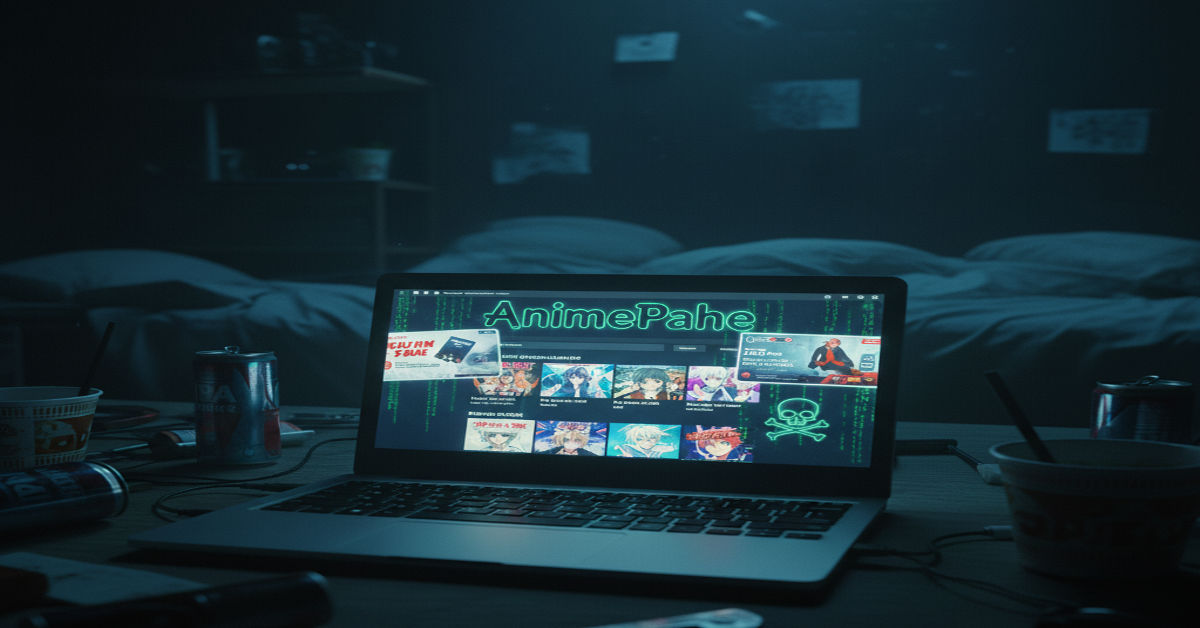AnimePahe for many anime fans is both a secret haven and a risky gamble. Within seconds of searching for a new series, it often appears among the top unofficial streaming sites, promising free, high-quality episodes with subtitles ready and waiting. But behind its slick interface lies a complicated story — one that touches on global copyright law, digital consumer behavior and the economics of modern media.
In an age where legitimate platforms like Netflix, Crunchyroll and HIDIVE compete fiercely for subscription dollars free streaming alternatives such as AnimePahe continue to draw millions of visitors each month. To some, it’s a public service easy access to Japanese animation that’s otherwise delayed, region-locked, or unaffordable. To others, it’s digital piracy in a new, more seductive disguise.
The debate is not new, but AnimePahe embodies a broader question for the streaming era when entertainment crosses borders faster than licensing agreements can keep up, who wins and who loses? This investigation explores how AnimePahe operates, the risks for users, the moral and economic consequences for the industry, and what its popularity reveals about the global demand for anime.
The Rise of AnimePahe
AnimePahe appeared quietly around the mid-2010s, emerging in online anime communities as a sleek, ad-light alternative to older, cluttered piracy sites. Its appeal was straightforward: 1080p video, English-subtitled episodes, and an interface that looked almost legitimate. No sign-ups. No paywalls. Just click and watch.
Users began sharing its links on Reddit, Discord, and anime forums. Within a few years, it became one of the most visited unlicensed anime sites worldwide. Unlike older torrent-based platforms, AnimePahe emphasized streaming — which made it accessible to mobile users and students without powerful computers.
But beneath that simplicity lay complexity: ever-changing domain names, inconsistent server locations, and a cat-and-mouse game with internet service providers. Its domain would vanish one week, resurface the next. For regular viewers, it became part of the ritual — searching for the “new working link.”
| Feature | Description | Implication |
| Free streaming access | No subscription or sign-up required | High user growth, unclear revenue model |
| Video quality up to 1080p | Comparable to legal services | Raises suspicion of unauthorized source files |
| English subtitles | Expands global reach | Boosts accessibility for non-Japanese speakers |
| Shifting domains | Frequent takedowns or mirror sites | Signals unlicensed status and evasion tactics |
| Minimal ads | Cleaner interface than competitors | Possibly funded through indirect ad networks |
These traits made AnimePahe feel user-centric, but also placed it in a gray legal zone. It wasn’t selling bootlegs or charging fees — just distributing copyrighted works it didn’t own.
The Legal Gray Zone
In most countries, streaming unlicensed copyrighted material is technically illegal, but the severity varies. Operators of such sites face the biggest risk, while casual viewers usually sit in a murky middle ground.
According to media-law specialists, platforms like AnimePahe exploit jurisdictional gaps. Their servers often reside in countries with lax enforcement or slow cross-border coordination. Even when a site is shut down, its operators can reappear under a new domain within days.
Legal analyst Eric Johnson, who consults for media firms, explains:
“The internet made copyright a borderless challenge. If your server’s in one country, your users in another, and your content originates from Japan, which jurisdiction applies? That uncertainty is what keeps sites like AnimePahe alive.”
Meanwhile, creators struggle to quantify the damage. A 2023 report from Japan’s Motion Picture Association estimated that global anime piracy cost the industry over $2 billion annually. That figure includes lost licensing deals, reduced ad revenue, and fewer subscriptions to legitimate services.
Still, there’s an irony here: the very popularity of unlicensed sites has pushed legal ones to improve. As Sarah Nguyen, a digital rights advocate, puts it,
“Piracy forced the market to evolve. Without the pressure from free sites, companies might never have invested in same-day simulcasts or multilingual subtitles.”
| Aspect | Licensed Platforms (e.g., Crunchyroll, Netflix) | Unlicensed Platforms (e.g., AnimePahe) |
| Legality | Fully licensed content | Unauthorized distribution |
| Revenue | Subscription or ad-supported | Unclear; often pop-ads or crypto ads |
| Security | Regulated data handling | Higher risk of malware and trackers |
| User cost | Paid | Free |
| Stability | Consistent availability | Frequent domain changes |
| Impact on creators | Supports industry | Reduces profit margins |
User Risks and the Illusion of Safety
For many viewers, AnimePahe feels safer than downloading torrents. There’s no visible “file transfer,” no software installation — just streaming. But cybersecurity experts warn that this is a false sense of safety.
Unlicensed streaming platforms often embed third-party ads that redirect to phishing pages or malicious downloads. Some mimic system updates or “stream faster” buttons that trick users into installing unwanted software.
Dr. Lopez notes, “Users confuse smooth design with security. A clean interface doesn’t mean safe code.”
Another risk is data harvesting. Sites that don’t charge fees must earn revenue somehow — often through aggressive advertising networks that track users across the web. Since AnimePahe operates outside regulated advertising ecosystems, users have little recourse if their data is misused.
The Economic Ripple Effect
Anime is not a small niche anymore. It’s a global business estimated at over $25 billion in annual value, with streaming making up a growing share. Licensing fees fund dubbing, subtitling, and even new productions. Every time a viewer chooses an unlicensed platform, a fraction of that ecosystem loses financial support.
Producers have begun restructuring deals, pushing for simultaneous international releases to limit piracy’s appeal. Yet the challenge remains cultural as much as logistical. Fans want immediacy, accessibility, and affordability. Legal streaming platforms often stumble on at least one of these points — and free sites step into the void.
Media sociologist Dr. Yuki Tanaka observes:
“Anime fandom thrives on participation. When fans feel excluded from the official market — by region locks or pricing — they justify alternative routes. It’s not rebellion; it’s access.”
Ironically, this “participation” has turned into a quiet arms race between legitimate and unlicensed platforms, each trying to offer what the other lacks.
Cultural Dynamics and Fandom Ethics
Anime fandom has always existed at the crossroads of passion and piracy. Long before streaming, fans shared “fansubs” — subtitled VHS tapes distributed for free by volunteer translators. Those early communities laid the groundwork for today’s global anime audience.
AnimePahe, in some ways, continues that legacy — democratizing access for fans in countries with no legal distribution. But the moral context has changed. In the 1990s, fansubbing filled a genuine access gap; in 2025, with dozens of legal options available, the justification is thinner.
Ethicist Dr. Claire Mbatha from the University of Cape Town notes:
“The question is no longer Can fans get access? but Are they willing to pay fairly for it? Free access has become an expectation, and that expectation devalues creative labor.”
Still, the impulse isn’t greed alone. Many viewers use such sites simply because legal alternatives remain inconsistent. Episodes appear weeks late, catalogues vary by region, and subtitles can differ in quality. The frustration is real — and unlicensed sites exploit it perfectly.
Regional Enforcement and Global Gaps
Enforcement varies wildly. In the United States, operators face lawsuits and domain seizures. In parts of Southeast Asia and South America, site blocking occurs at the ISP level but with limited success. The European Union has coordinated several cross-border actions, yet smaller domains resurface in hours.
A senior policymaker at a European telecom agency (who requested anonymity) explained:
“The digital hydra effect is real. Cut one head off, two pop up. Unless enforcement is combined with accessible legal alternatives, piracy remains the path of least resistance.”
AnimePahe’s survival demonstrates the limits of reactive enforcement. Its operators understand global jurisdiction well enough to stay one step ahead. And as long as public demand persists, mirror sites will continue to thrive in legal limbo.
What Viewers Should Know
While this article does not provide legal advice, it’s important for viewers to recognize both the ethical and practical implications of using such sites. Awareness, not guilt, is the goal.
Here are key considerations before using any free anime streaming platform:
- Legality: Check if the platform clearly lists licensing partners.
- Privacy: Avoid inputting personal information or enabling push notifications.
- Security: Use strong antivirus protection if visiting unknown domains.
- Ethics: Remember that ad revenue on such sites rarely benefits creators.
- Alternatives: Explore legal, low-cost streaming plans that support studios and translators.
- Education: Teach younger viewers about the risks of “free” online entertainment.
- Data safety: Free streaming often monetizes through invisible data collection.
Dr. Lopez sums it up best: “Treat every free site like a contract. You’re always paying something — if not in dollars, then in data or integrity.”
Five Takeaways
- AnimePahe’s appeal lies in convenience and access — but not legality.
- User risks include malware, tracking and privacy breaches hidden behind a clean design.
- The industry impact extends far beyond lost revenue; it affects which stories get told.
- Cultural drivers — impatience, affordability, and fandom passion — sustain unlicensed viewing.
- Sustainable solutions require global cooperation, better legal platforms, and informed viewers.
Conclusion
AnimePahe is more than a website. It’s a mirror reflecting how modern audiences consume media — impatient, global, and digitally fearless. It thrives because it meets a real demand that legal systems still struggle to satisfy immediate, affordable, borderless access.
Yet its existence also exposes the cracks in the creative economy. When content is taken for granted, the ecosystem that produces it begins to weaken. The anime industry’s challenge is not only fighting piracy but earning loyalty — through fair pricing, timely releases and global inclusion.
For viewers, the choice is both personal and ethical. Every click tells a story: one of desire for art, convenience, or fairness. The future of anime will depend on how those desires balance with respect for the creators who bring these worlds to life.
Frequently Asked Questions
1. What is AnimePahe?
AnimePahe is an unlicensed streaming site that offers free access to anime series and films. It operates outside official licensing channels.
2. Is it legal to watch AnimePahe?
The legality varies by country. While users rarely face prosecution, the site itself distributes copyrighted material without permission.
3. Can AnimePahe harm my device?
Potentially, yes. Free streaming sites often rely on third-party ad networks that may deliver malware or intrusive pop-ups.
4. Why do people still use it?
Because it’s convenient, comprehensive and free. Many users face limited regional access to anime on legitimate platforms.
5. What are safer legal alternatives?
Licensed services such as Crunchyroll, HIDIVE, Netflix, and Amazon Prime Video offer secure, high-quality anime streaming while supporting creators.







